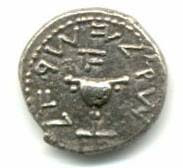It was a night lesson tonight. This is good as I'm way out of practice in night flying, and it was my first time flying IFR at night.
Got to the airport just before 6pm and started preflighting the plane, 88J. It was a No-Go as the plane had a very loose alternator belt and some other issues that Kevin didn't like, namely the bolts connecting the landing gear were loose and wouldn't tighten on one side. The on to N8570F and that one got down-checked as a couple of the bolts attaching the right landing gear were actually broken which is not good. Someone messed up a cross-wind landing and over-stressed them it would appear. These planes do get used kinda hard.
So we were kinda running out of planes.
So on to N1869H. The plane with the ever-sliding seat and the mis-rigging. Sigh.
At least it passed the preflight. Yes, the seat did slide. And the yoke must be held slightly left in order to fly straight. Sigh.
We then went to do the most recent instrument check-ride the examiner had done to get used to it - Troy RNAv 9 circle 27, then KPTK RNAV 27L and KPTK Localizer Back Course 27L partial panel.
Interestingly enough, we would do them VFR without flight following. Clouds were just high enough that it wasn't an issue to be VFR at 3,000 feet.
So, up we went to Troy, and I did the RNAV 9 full procedure with a miss and not a circle as circling to 27 is not authorized at night.
Then to Pontiac and I did the RNAV 27L, then got told to contact Detroit Approach for the Localizer Approach as Pontiac didn't want us doing that one by ourselves.
So just as I'm getting vectored, Kevin kills the G5s and I'm partial panel while being vectored.
In the dark.
With the NAV 2 VOR instrument being unlit.
So, I have to shine a red flashlight at it while flying. Yay, a nice new challenge. I get everything programmed and identified and fly vectors as I get the approach going.
Good approach, a fair bit of work keeping the needle centered doing a few S-turns but then got it locked in and all good. Nice descent to Minimum Descent Altitude and a pretty good but not great landing. I need two more landings to get night current again, hopefully I'll knock those out next week.
Instrument flying is a bit more challenging at night - you're still looking just in the cockpit but you don't have as much peripheral vision and the instruments are harder to make out. Upsides are its dark so there's less distractions outside, and the runways do stand out from the backclutter a lot more at night.
Overall I feel I'm getting better at being more precise with both heading and altitude, but I do need to keep a sharper eye on the altimeter as I do have a climbing tendency. But, this time I got the plane trimmed out just right on at 3,000 feet, mis-rigging and all. That felt good.
A challenging flight and a lot of fun to do.
That's 1.4 night with 1.0 simulated instrument, 3 approaches, 1 hold and a good night landing.

3 comments:
One might think that the school would not have that bad of a maintenance program.
While I did find small things on the rental planes when I was in training, I never found safety of flight issues or mechanical defects that were not fixed immediately....and the planes were deadlined until they were.
Yep,the instructor deadlined both planes when he found the bolt issue. Generally their maintenance is very good so I'm surprised they didn't catch those before he did. Looks like some students weren't putting crosswind correction in on landing and thus twisting the gear and thus loosing or shearing the bolts.
Good job, and concur with Bert...
Post a Comment